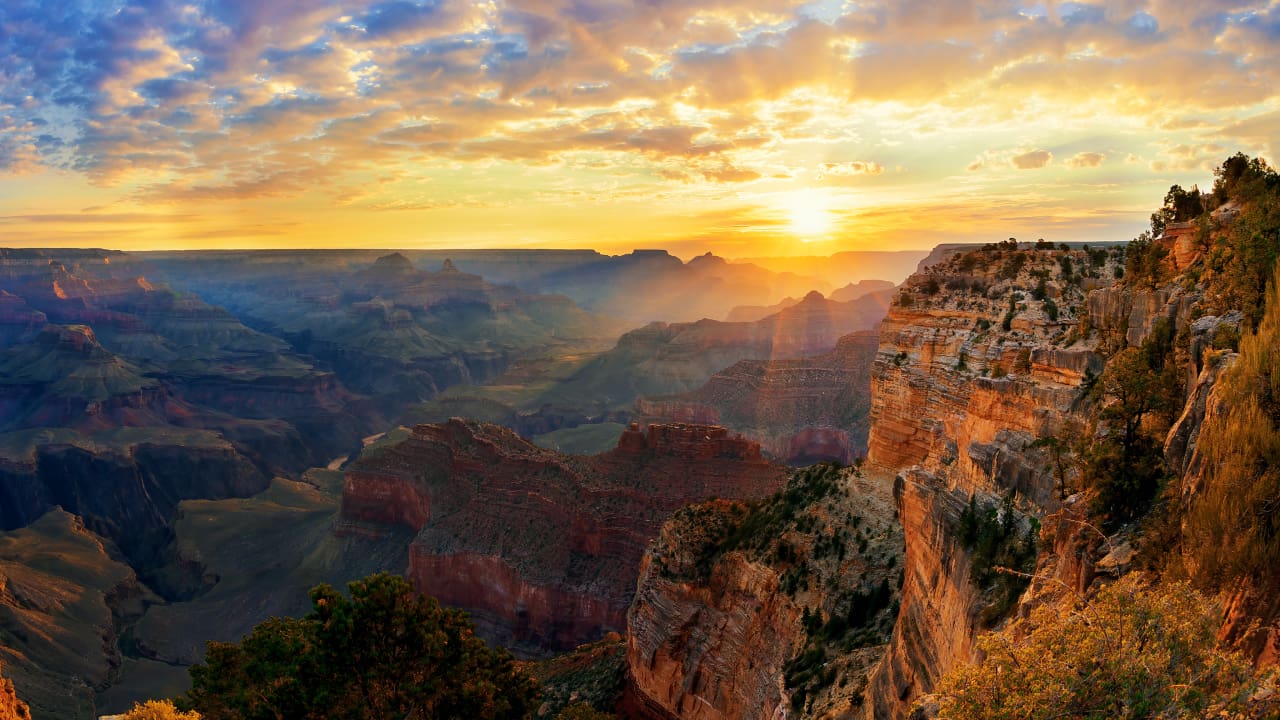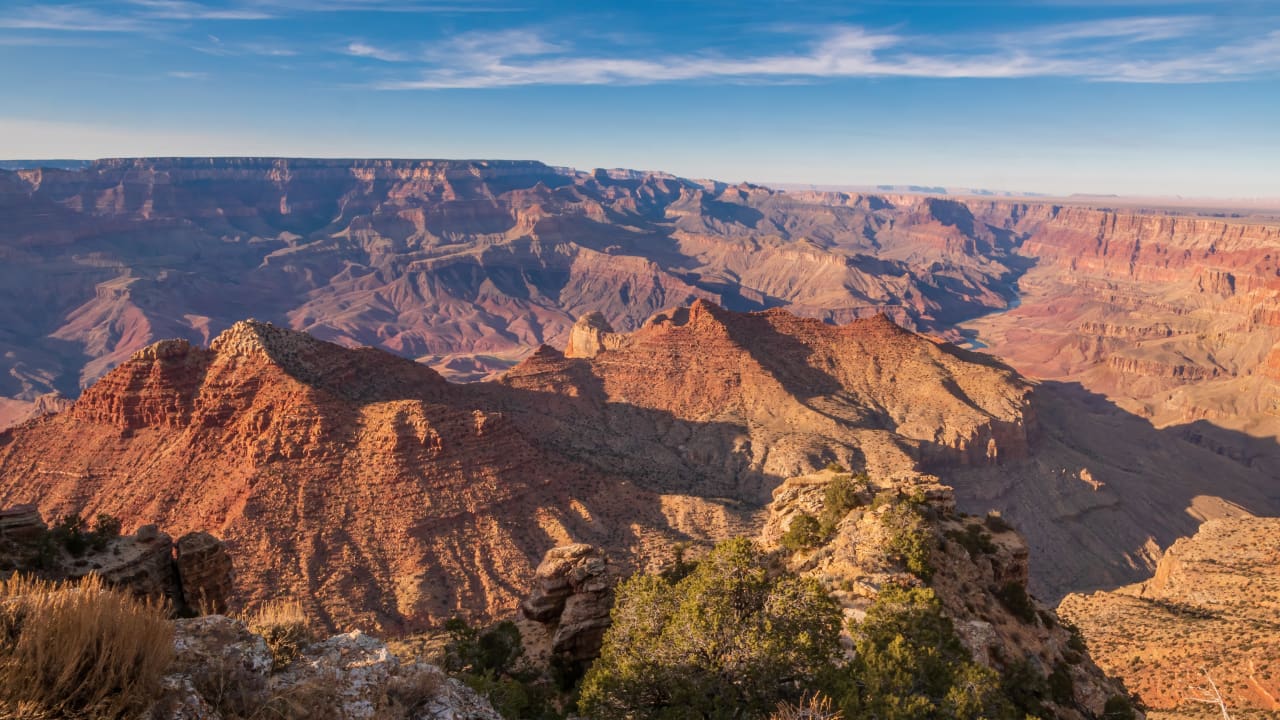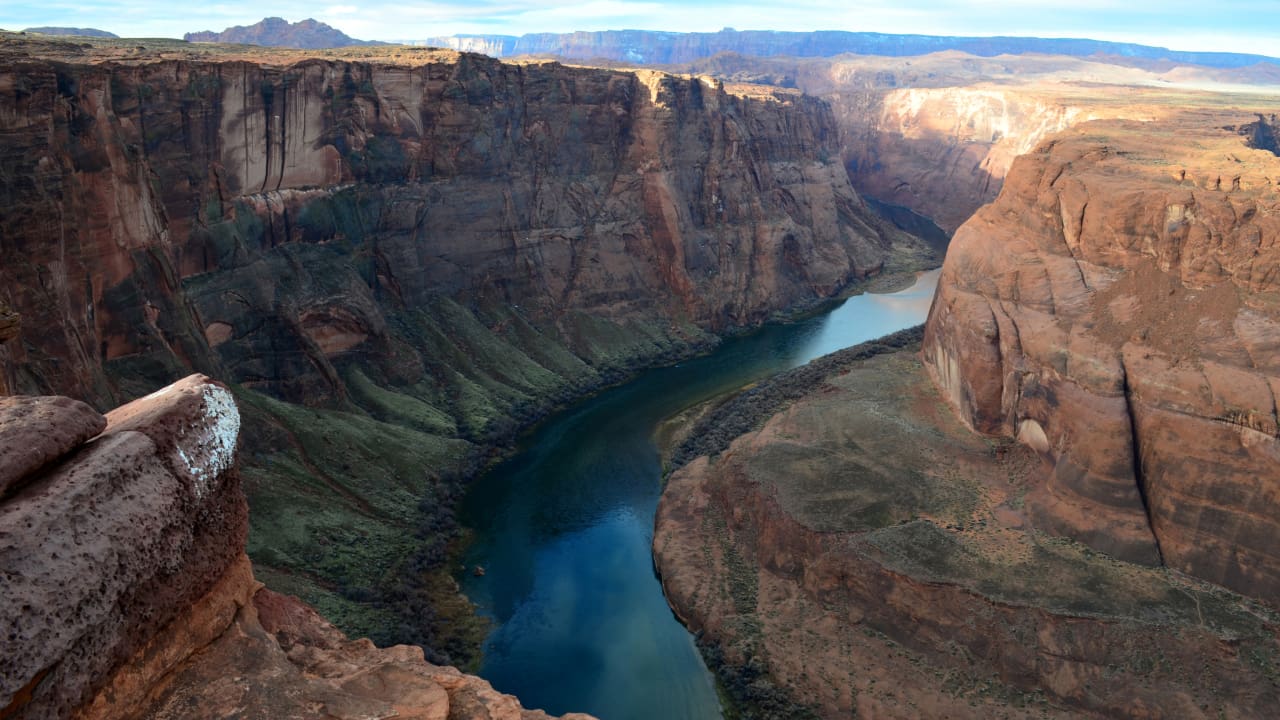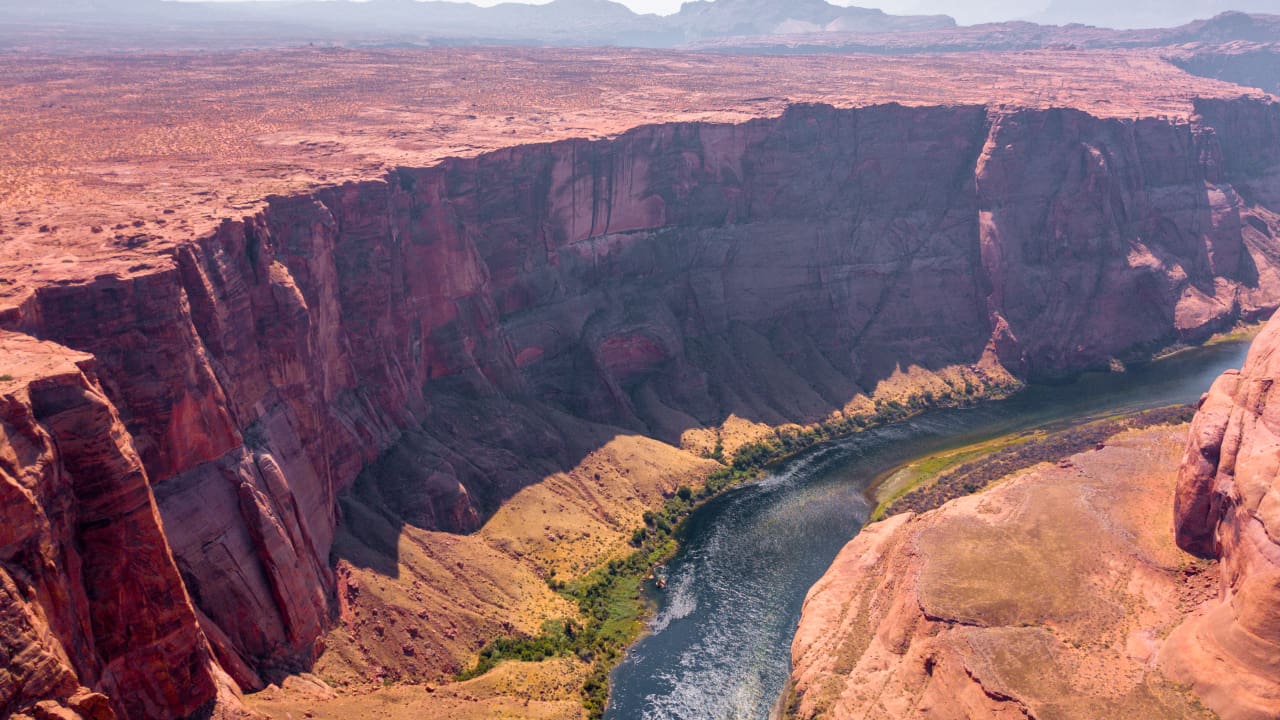The Grand Canyon of the United States: A Natural Monument
Nature has always held the tools of creation and destruction in her hands, and nowhere is this duality more powerfully expressed than in the Grand Canyon of America. Spanning the northwest corner of Arizona, this vast chasm is a story not in ink but in rock, water, and time. It’s a place where the Earth reveals its soul, layer by ancient layer, under the open sky.
After five million years of erosion by the mighty Colorado River, the Grand Canyon remains a monumental testament to the power of erosion. So vast and grand is it that, upon visiting, President Theodore Roosevelt declared it a place worth preserving “for the benefit of the people.”
Table of Contents
His vision led to the proclamation under Roosevelt of national monument status over huge tracts of the Canyon in 1908. It later became the Grand Canyon National Park in 1919. But the Canyon isn’t just for thrill – seekers, or even geologists – it’s a sacred and cultural place as well, particularly for the Native American tribes that once lived there. The memory of the Earth unfolds as one experiences the Grand Canyon.
Geological Formation

The tale of the Grand Canyon of America starts with the uplift of the Colorado Plateau. It’s a massive geologic event that raised great swaths of sedimentary rock thousands of feet above the ocean. This landscape was moving skyward around 65 million years ago during a mountain-building period, the Laramide Orogeny. What came next was a masterclass in erosion.
Now, the Colorado River, which had been carved by the Kaibab Uplift, took a bite out of these elevated layers. It was helped over time by rain, wind, and ice. The once – minuscule stream channels merged into a single waterway that cut back farther and wider into the plateau. Scientists have called this the “Grand Canyon Event“.
Yavapai Point, below Yaki Point, approximates its depth today, but, standing even on this expanse, it is impossible to “appreciate” the Canyon. The river is almost a mile and two thousand feet below and separate the rocks of rims from each other. The river was not 4,000 feet below and 10 miles away, as Powell was finally to resolve it, but 6,000 feet below and 10,000 miles away.
The Canyon was greater in length and width than he ever computed. Its walls are a testament to the Earth’s history, a virtual encyclopedia of 2 billion years of geological record printed in thick bands of red, yellow-ochre, and rust rock.
Uranium—lead dating of calcite deposits on nine different cave walls attests that some parts of the Canyon began forming over 17 million years ago. Repeated glaciations, along with intensified water flow, accelerated the erosion. At the same time, erupting volcanoes in its western arm intermittently dammed the river. It’s done with flows of molten rock, creating still another level to the Canyon’s history.
Physical Features
It may not be the deepest canyon on the planet; that title belongs to the Kali Gandaki Gorge in Nepal, and it isn’t the widest, either. That title goes to the Carpertee Valley in Australia. But the Grand Canyon’s sheer size and complex, multilayered, multicolored strata are incomparable.
What makes it exceptional is the vertical timeline etched into its walls. The exposed rocks are among the oldest on Earth, more than half of which are over two billion years old. These include metavolcanic rock, sandstone, and schist overlying granite basement rocks. It’s the oldest of which dates to 1.84 billion years old.
Towering over the canyon are two main rims. They offer significantly contrasting views and ecosystems and stand at remarkably different elevations—the North Rim and South Rim. The more accessible and popular South Rim is about 7,000 feet (2,134 meters). While the North Rim, higher in altitude, hosts fewer tourists and remains more wild and remote.
The shifting path of the Colorado River forge the canyon by it’s hallmark turns and sheer faces. These paths were twisted by the uplift of the Plateau. It wraps around the Kaibab ARC, with the Canyon’s dramatic turns and sharp cliffs. Paired with ever—changing light conditions, it creates endless visual drama, especially at sunrise and sunset.
Native American Heritage

Long before the Grand Canyon’s rim was ever encountered by European explorers, it was home to a robust Native American population. Cave dwellings and granaries made of sandstone were constructed by the Ancestral Puebloans, also known as the Anasazi, within the canyon walls. To these native people, the Grand Canyon wasn’t just home — it was sacred.
Several tribes, such as the Havasupai, Hopi, Hualapai, Navajo, and Zuni, hold the Canyon in particular reverence. They have taken part in national protests when the federal government authorized development on the Canyon’s rim.
Related Pick: Historical Places in the USA
According to oral histories, the Grand Canyon of America is the center of their worlds. It’s where they were born, migrated, and held great gatherings and rituals. The term “Kaibab” means “mountain lying down” and hails from the Paiute language. Europeans first learned of the Grand Canyon in 1540 from the Spanish, who were under the leadership of Hopi guides. They set foot on the rim and peered into the abyss. However, they couldn’t make their way down, and they described it as impractical and barren.
Geography & Location

The Grand Canyon of America is located in the geographical region of the Colorado Plateau. It possesses several sedimentary rocks that have been mineralized. The entire Canyon is confined to the state of Arizona and runs from Lee’s Ferry to the Grand Wash Cliffs.
The South Rim is at the bottom of the Canyon, where the Colorado River runs, over a mile lower. Erosion has swept away overlying layers and tilted the present rock layers upward. It reveals the sedimentary rock layers originally deposited in shallow seas, rivers, and deserts. Elevation, combined with temperature and rainfall, produces climatic conditions in the state’s East that have led to the formation of erosional landforms.
One of the most prominent geological features is the Kaibab Plateau. It’s a tall and heavily wooded region that was integral in the formation of the Canyon. The flow of the Colorado River incises into the plateau and creates a chasm of some 1,370 meters deep.
Ecological & Biological Diversity
The Grand Canyon of America is more than a geological marvel – it is also a diverse ecological mosaic. Its dramatic variation in elevation and exposure, the Canyon hosts an astonishing variety of life. The Canyon is home to over 1500 plant species, 500 bird species, 90 species of mammals, and 50 species of reptiles.
By hiking from the South Rim to the river, you can drop from the Canadian Rockies to the deserts of Mexico in a matter of hours. The ponderosa pine and Douglas fir forests covers the rims, and the inner canyon contains desert-friendly plants such as agave, cactus, and creosote.
You Might Like to Read: Best Family Vacation Destinations For a Great Summer Vacation
The animals that call the place home – mule deer, mountain lions, California condors, bighorn sheep, and skittish ringtail cats - do the best they can. The Canyon’s biological corridors are important for species’ survival, migration, and adaptation, especially in the context of climate change.
Here, several species are endemic, meaning they are nowhere else on Earth. The Grand Canyon pink rattlesnake is an example of a pale form lives in isolation. Rattlesnakes have been accumulating for so long in the Grand Canyon that they have evolved subspecies in response to its special conditions, like hillier land, with a broader range in temperature.
Visitor Information & Park Highlights

Grand Canyon National Park (1919) is one of the United States’ most famous national parks, with over 5 million visitors each year. The park has two rims the South Rim and the North Rim, which have their own different views and feels.
The South Rim is the most developed and accessible part of the park. It includes the Grand Canyon Visitor Center, Mather Point, Bright Angel Trail, and the Historic District of Grand Canyon Village. It’s open year-round and is accompanied by amenities like lodges, shuttle buses, and ranger programs.
The North Rim is higher, more isolated, and accessible only from mid-May to mid-October. It’s the quieter sibling, one that’s perfect for solo travelers who want solitude, and panoramic hikes like the North Kaibab Trail or Cape Royal.
Here are some of the iconic views and activities:
- Desert View Drive: It offers incredible overlooks, such as Lipan Point and Navajo Point.
- Havasu Falls: A turquoise waterfall deep in Havasupai tribal lands that requires a permit and a strenuous hike.
- Rafting the Colorado River: Both motorized and oar-powered trips offer a thrilling way to experience the Canyon from below.
- Grand Canyon Skywalk: The glass bridge that juts out over the West Rim’s edge, giving vertigo-inducing views down 4,000 feet.
Adventurers, photographers, geologists, and spiritual pilgrims all come to visit something that, in one way or another, touches the soul.
Lesser-Known Facts
Even those who visit occasionally may not know about all the Canyon’s secret treasures:
- There are more than 1,000 known caves within the Canyon, but just one is accessible to the public: the Cave of the Domes.
- The Phantom Ranch, at the bottom of the Canyon, is only reachable by foot, mule, or raft, and was created by the iconic architect Mary Colter.
- The Grand Canyon is a source of secrets about prehistoric life, from ancient marine creatures to footprints of early reptiles.
- Millions of years ago, lava spewing from a series of volcanoes encased the Canyon. It is producing a temporary dam and driving an adjustment in the river’s path.
These types of details enhance the visitor experience and demonstrate how active the Grand Canyon actually is.
Preservation and Current Use
The beauty and significance of the Canyon has never been depending upon conservationists. Theodore Roosevelt’s vision established the American tradition of environmental stewardship. The Grand Canyon became a UNESCO World Heritage Site in 1979.
The National Park Service is now managing it, and maintaining the delicate balance of preservation and tourism. Today, issues such as water management, air pollution, and climate change threaten the natural spectacle. Temperature is rising and snowmelt is decreasing – all of which impact the flow of the Colorado River, and threaten the ecosystem as well as water supplies downstream.
Attempts by tribal nations, geologists, rangers, and volunteers help to preserve the site today. Projects range from trail maintenance and restoration to protection of archaeological sites, invasive species management, and environmental education.
Respecting the Canyon is respecting its layers: not only of stone, but of history, culture, and ecology.
Conclusion
It’s more than a canyon; it is a confession on the part of Earth, a story children can read. Each step along the rim of this ancient gash, every view, down into its fiery belly, one is enfolding within a tale that traverses millennia.
Its eruptive, volcanic past, to its molasses-sipping erosion, and its significance as a spiritual home to native tribes are an icon of American conservation. The Grand Canyon of America stands as a monumental testament to what nature can achieve with patience, pressure, and enough time.
You Might Like to Read: Top 10 Best Hiking Trails in the World
Whether it’s the geological splendor, the ancient history, or the quiet wisdom that emanates from within its walls, one thing is certain: The Grand Canyon is not simply a place to visit — it is a place to witness, a place to remember.

Puzzled place, I got a chance to watch movie, it was about a lost couple in “The Grand Canyon” It’s having very weird paths and shapes in itself…
Grand Canyon so famous, but some times looks really weird, an other world with in this world.
Very informative article. The image of Grand Canyon motivates me for exploring it.